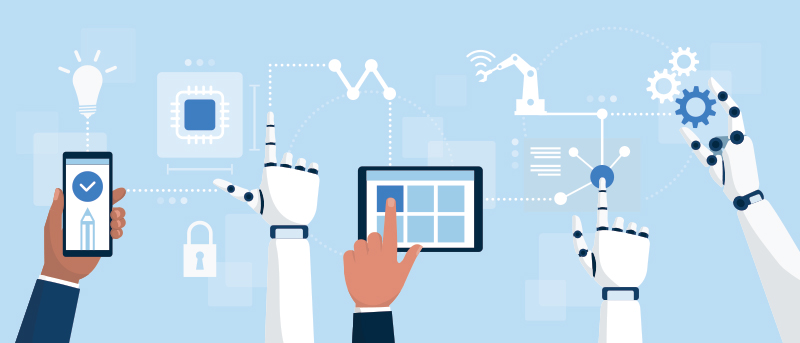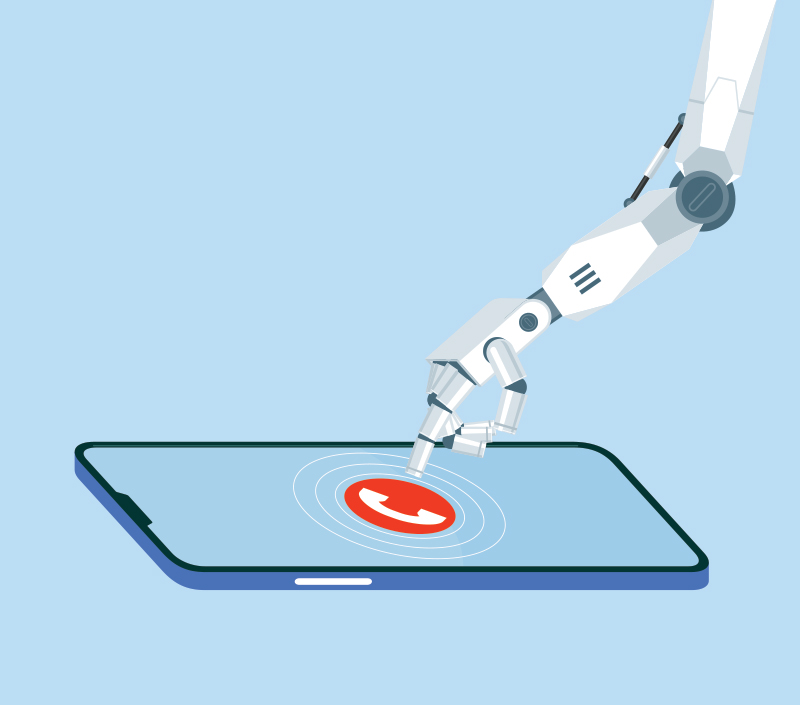AI in Restaurants: 5 Machine Learning Trends In 2024
Five trends in machine learning that will dominate restaurants in the new year
To the casual observer, artificial intelligence might sound a lot like sentient robots waiting to take over the world. The reality is less sci-fi and more subtle, and it’s already creating incremental benefits for restaurants that have tapped into the tech. AI will play an important role in the future of dining, whether it’s generating simple smoothie recipes or doing more of the heavy lifting. Here’s a small taste of how AI is already working for restaurants today.

Using AI to Customize Orders
Inside a Downtown San Francisco storefront, the computers are running the show. BetterBlends, which sells smoothies, claims to be “the most personalized restaurant ever.” The concept uses artificial intelligence to generate smoothie recipes based on customer preferences.
Customers scan a QR code with their phones and answer a few questions: How sweet do you like your smoothie? Options range from “not sweet” to “basically dessert.” Do you prefer a dairy or non-dairy base? How do you feel about vegetables? Any allergies? Are you following a specific diet, such as dairy-free or keto?
Once the system generates a recipe, it gives it a cheeky, if not all that creative, name. For a not-too-sweet fruit and vegetable non-dairy combo, the computer suggested I might like a “Mango Sunrise,” a “Creamy Carrot” or an “Island Sunset,” which disappointingly did not contain coconut milk, but did contain pineapple. Luckily, human employees make the smoothies and can override the computer.
Combining fruits and milk blends into $10 smoothies isn’t a mind-bending use of technology. Conceptually, BetterBlends isn’t all that different from a Jamba Juice. But AI is still a novel technology that restaurants can have fun with. Does a smoothie blended by an algorithm taste better than an off-the-menu option? Maybe not, but it’s a lot more fun for customers.
Reservation Bookings Through ChatGPT
Reservations platform OpenTable announced a partnership with ChatGPT in March. OpenTable feeds information to ChatGPT, including its roster of restaurants and real-time availability data, so people can ask ChatGPT for restaurant recommendations and availability. The results are strikingly useful answers to questions such as, “What’s the best place in San Francisco for Mother’s Day brunch?” or “Where can I eat with a friend in Brooklyn on Saturday at 8 p.m.?”

“It could very well be a significant or important piece of traffic and demand for restaurants,” Soo says.
Once customers are in the door, AI can help create personalized marketing campaigns to encourage repeat visits. Loyalty provider Thanx uses AI to help restaurants write better emails, suggesting subject line improvements or helping a restaurant strike the right tone between friendly and formal. The platform can create segments of customers based on predicted behavior and suggest ways to engage them, such as running a marketing campaign with an attractive promotion to customers who aren’t likely to purchase in the next month without a suggestive nudge.
“It’s not just about pushing a menu or an experience; it’s about building genuine connections,” says Thanx CEO Zach Goldstein. “Relevance is what allows us to connect with our customers on a personal level, tailoring our communications to their unique interests and behaviors.”
Leveraging AI to Answer Phone Calls
“Press one to make a reservation” doesn’t cut it anymore. AI can answer the phone and provide diners with information without involving host staff.
Benson Wang, founder of San Francisco-based Palm Hospitality, uses Slang.ai, as do hundreds of other brands, to take calls at a handful of Bay Area restaurants. At first, he was skeptical. Now, bots answer between 70% and 80% of calls to the restaurants, responding to customer questions about hours and location and helping them book tables.
“We’re required to prioritize when human interaction is most suitable and useful,” Wang says. “Having someone at the host stand all day taking calls … while it’s important, choosing between that and a server that’s revenue-generating is kind of a no-brainer for us.”
Slang.ai’s voice technology works so well, Wang says, that callers sometimes can’t tell the difference. At the end of the month, Slang.ai sends customers a report, along with call recordings. Most people eventually catch on that they’re talking to a robot, Wang says, but it’s not immediately clear in conversation.
By 2030, Slang.ai says it will save a collective one billion minutes of time with voice tech, according to its website – “more human than human.”
Midjourney Creates Enticing Photos of Dishes
It’s easy to worry that smart computers are replacing human workers. But in some cases, they perform tasks better. Joey Rubin leads Biite Club, which hosts special events and pop-ups (dubbed “drops”) in Los Angeles. Biite Club sells tickets to the events and markets them online, a process that requires food images. And when photos don’t exist to illustrate a dish, generative AI can create them. Rubin has used Midjourney to generate enticing photos of dishes that don’t yet exist, but will soon.
“Food is very expensive, and all the drops are original,” he said. “In some cases, we literally need to generate an image from scratch because it costs so much to light up labor and materials for a small drop. We can get very close to the product and the feeling with AI for the ones when a chef is coming in from out of town or photos simply aren't possible.”
Save Time on Training
AI helps restaurants connect with guests, but it’s also becoming an internal time-saver.
Angelina Sabatini, director of training at Ford’s Garage, a concept with 25 locations across the South and Midwest, says she’s saved hours – even days – by using artificial intelligence to build online training programs for employees. Recently, she used software from a company called Opus to transform her restaurant’s menu description guide from a lengthy printed book to an interactive digital lesson in about an hour.
She uploaded relevant information – in this case, the existing menu guide, images, even social media content – and the software generated an outline and lesson she could quickly refine with a human touch.
This process works well because it’s personalized to every restaurant’s experience, explains Rachael Nemeth, Opus co-founder and CEO.
“The more we train the models, the better they can serve employees,” Nemeth says. “The more you use our content builder, the more it picks up your tone of voice. Every restaurant culture has its own language, and it can learn that behavior. We're not pulling from the billions of data points on the internet. We're pulling from your existing working documents that you use every day, and we're helping you make them better.”
What is Artificial Intelligence?
Artificial intelligence refers to technology that’s able to think and learn similar to a human. AI can make predictions, recommendations, even decisions using the information it’s given. AI works in real time, offering an extra set of metaphorical hands to help. Generative AI, a specific type of artificial intelligence, creates content – words, images and videos. Some AI functionality is built into existing software that people and businesses use (think Gmail’s auto-complete feature). Others are freely available tools of their own. Anyone can access ChatGPT, an AI-powered chatbot, and Midjourney, an image generator that can create images from a written description.

